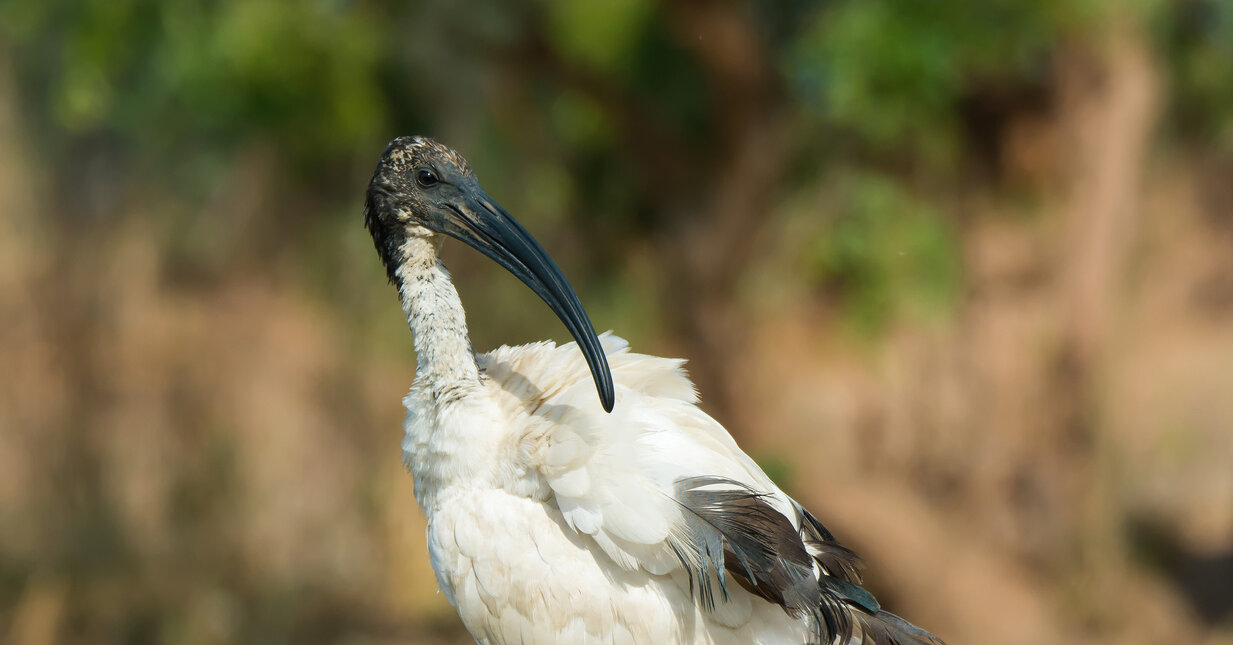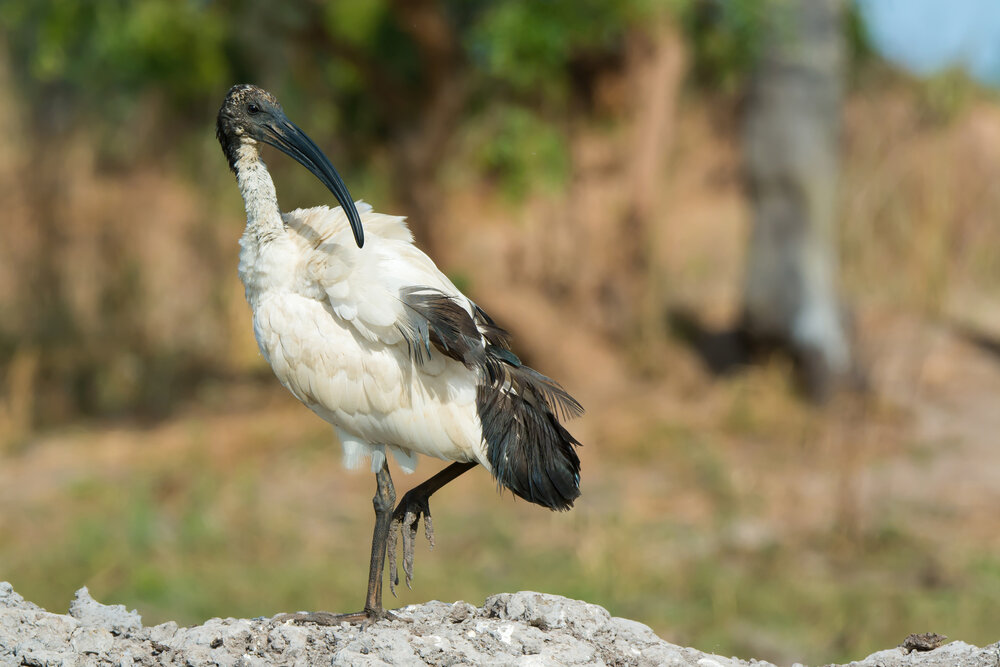
Madagascar sacred ibis
Zoo Berlin protected water birds on the western coast of Madagascar.
Project facts
- Project name
Perschke-Voronosy
- Species
Madagascar sacred ibis (Threskiornis bernieri)
- IUCN threatened status
Endangered (EN)
- Project location
Bombetoka Bay, Madagascar
- Greatest threat
Loss of habitat; consumption of eggs and chicks by the local population
- Response
Preserving the ibises’ habitat by establishing conservation areas; raising awareness among the local population of the need to protect these birds
Threat Categories of IUCN


Madagascan project with roots in Berlin
In 1994, animal keeper Mario Perschke, who had worked at Tierpark Berlin since the 1980s, travelled to Madagascar during his holidays to help out at the zoo in Tsimbazaza. Once there, he fell in love with the country, its people, and its unique flora and fauna. From then on, the primate keeper returned to Madagascar every year, eventually emigrating there in 2001. In March 2005 he founded an association called Voronosy with the support of Zoo Berlin and several other German conservation organisations. When Perschke unexpectedly passed away in 2007, the project was renamed Perschke-Voronosy in his honour. The project is dedicated to conserving biodiversity in the Bombetoka Bay on the western coast of Madagascar. The bay, an area of around 150,000 hectares featuring more than 20 islands, is one of Madagascar’s most important sites for water birds because of the wide range of species it attracts.
A flagship species
Madagascar sacred ibises are endemic to Madagascar, a huge island off the coast of East Africa. However, the birds’ habitat is shrinking rapidly due to the destruction of the forests and swamps where they breed. This endangered species is now only found in the few remaining intact mangrove habitats along the western coast of Madagascar. Forest and swamp clearance is not the only threat to the birds’ survival, however; local communities also collect and consume ibis eggs and chicks. There are currently believed to be only 3,000 of these ibises left in Madagascar. The Perschke-Voronosy project’s primary goal is to get conservation status granted to the Bombetoka Bay islands that represent the most important breeding sites of the Madagascar sacred ibis and other wading birds. The sacred ibis is a popular bird in the region and it is predominantly local people who work on the project. The ibis is thus an important “flagship species” – meaning that efforts to protect it from extinction simultaneously offer the chance to protect the mangrove habitat and its rich variety of inhabitants.
Long-term protection through education
The project combines conservation measures with development assistance for local communities. It focuses on building awareness as well as protecting the mangrove swamps favoured by water birds. To this end, project workers produced informative material and signs to educate people about the need for conservation and also got local radio stations and schools on board. The project provides boats that are used for patrolling the conservation area, taking tourists on trips, and catching fish. Other measures include offering local women sewing machines and sewing courses so that they can tap into alternative sources of income; helping locals cultivate fruits, vegetables and maize; and encouraging people to keep bees and hens.
In remembrance of Mario Perschke
Since Mario Perschke’s unexpected death in Madagascar in 2007, Zoo Berlin has cooperated with Vogelpark Walsrode and the zoos in Duisburg, Landau and Münster on a sacred ibis project in the conservation areas that Perschke identified. The renamed Perschke-Voronosy project honours the memory of the Berlin animal keeper and ensures that the efforts he launched can continue to make a difference. The European Association of Zoos and Aquaria (EAZA) has included the Perschke-Voronosy project in its Madagascar Campaign.
Support from science
In 2014, a conservation project was launched in western Madagascar in cooperation with the University of Bristol and the Bristol Conservation & Science Foundation. Project workers looked at the ibis population and the ecology of their habitat, studying behaviour, population size, foraging and breeding habitats, and threats to their survival. The study showed that the conservation measures are starting to take effect and that populations are stabilising where, previously, numbers were in decline. In 2016, Bristol Zoo and Zoo Berlin initiated another research project in cooperation with local NGO Mikajy Natiora Association (MNA). Dr Amanda Webber of the Bristol Zoological Society and Dr Sylviane Volampeno of MNA studied the ibis population in Sahamalaza Bay on the western coast of Madagascar. The team analysed how the mangrove swamps are being used by the local community and looked at factors affecting use of the nesting sites.
Photos: ©

